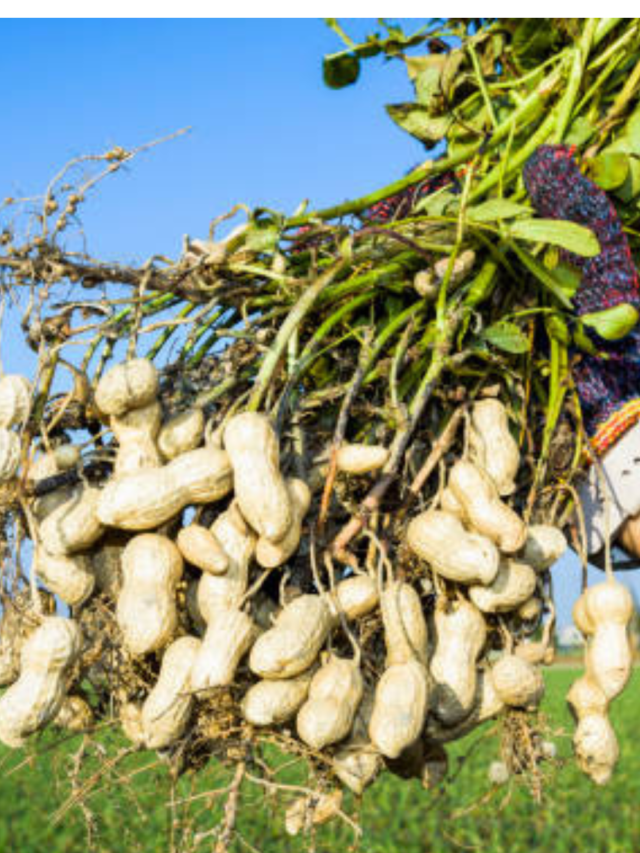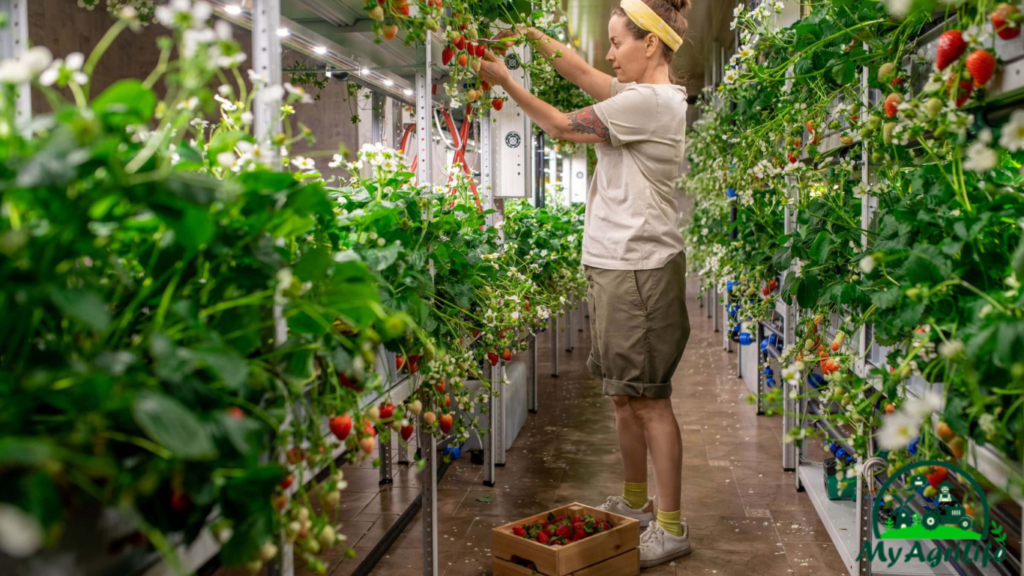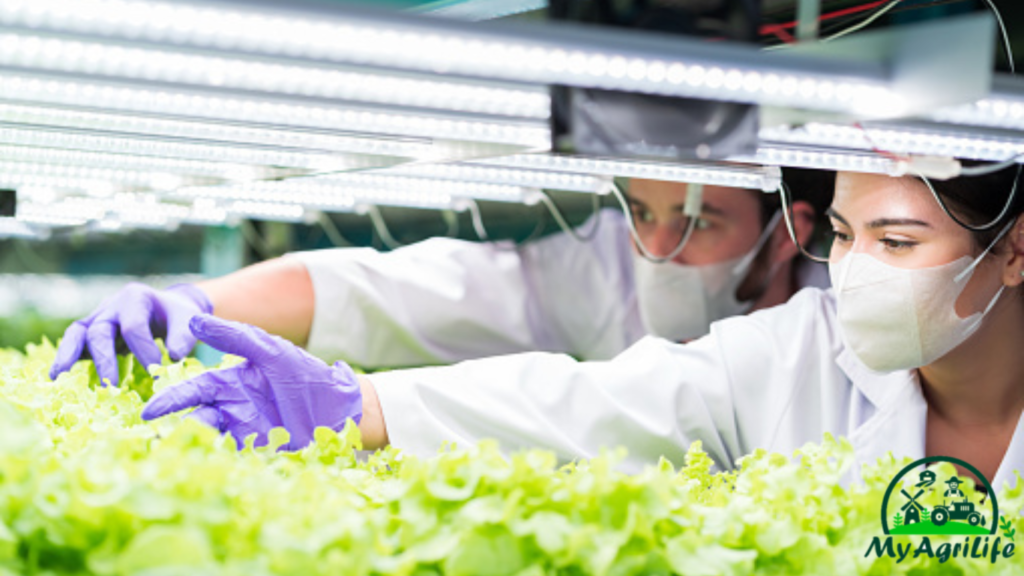Content of Table:
1.Introduction
2.Technological Advancements
3.Sustainability and Eco-Friendly Practices
4.Online Grocery Shopping and Delivery Services
5.Shift towards Health and Wellness
6.Social and Community Spaces
7.Conclusion
8.References
Introduction
The future of grocery stores is expected to be shaped by technological advancements, sustainability practices, online shopping, and a shift towards health and wellness. With the rapid pace of innovation, grocery stores are likely to undergo significant transformations to meet changing consumer preferences and enhance the overall shopping experience. This article explores key trends that are expected to shape the future of grocery stores.
Technological Advancements
Technological advancements will play a significant role in shaping the future of grocery stores. Here are three key areas where we can expect advancements:
1.Automated Checkout Systems: Traditional checkout processes are being replaced by automated systems such as self-checkout kiosks and mobile payment options. These systems improve efficiency, reduce wait times, and enhance the overall shopping experience for customers.
2.Smart Shelves and Inventory Management: Smart shelves equipped with sensors and RFID technology can track inventory levels in real-time. This enables store managers to efficiently manage stock, reduce waste, and ensure items are always available to customers. Additionally, smart shelves can provide personalized recommendations and promotions based on customer preferences.
3.Personalized Shopping Experience: Artificial intelligence (AI) and machine learning algorithms are being used to personalize the shopping experience. Through data analysis and customer profiling, grocery stores can offer personalized recommendations, discounts, and tailored advertisements to individual shoppers. This enhances customer satisfaction and loyalty.
These technological advancements not only improve operational efficiency for grocery stores but also enhance the convenience and satisfaction of customers, creating a more seamless and enjoyable shopping experience.
Sustainability and Eco-Friendly Practices
Sustainability and eco-friendly practices are becoming increasingly important in the future of grocery stores. Here are three key areas where we can expect a focus on sustainability:
1.Reduced Packaging Waste: Grocery stores are adopting practices to minimize packaging waste. This includes promoting the use of reusable bags, offering bulk bin sections for customers to purchase products without excessive packaging, and encouraging the use of eco-friendly packaging materials such as compostable or recyclable options.
2.Local and Organic Products: There is a growing demand for locally sourced and organic products. Grocery stores are partnering with local farmers and suppliers to offer a wider selection of these products. This reduces the carbon footprint associated with long-distance transportation and supports local economies. Stores are also adopting sustainable farming practices and promoting organic farming to ensure the availability of environmentally friendly produce.
3.Energy Efficiency and Renewable Resources: Grocery stores are investing in energy-efficient technologies and renewable energy sources to reduce their environmental impact. This includes installing LED lighting, using energy-efficient refrigeration systems, and implementing renewable energy generation systems such as solar panels. Additionally, stores are implementing waste management programs to recycle or compost organic waste, reducing landfill contributions.
By prioritizing sustainability and eco-friendly practices, grocery stores are not only meeting the growing demand for environmentally conscious products but also contributing to a greener future by reducing waste and minimizing their carbon footprint.
Online Grocery Shopping and Delivery Services
Online grocery shopping and delivery services are poised to play a significant role in the future of grocery stores. Here are three key aspects related to this trend:
1.Increased Convenience and Accessibility: Online grocery shopping offers customers the convenience of ordering groceries from the comfort of their homes. With a wide range of products available online, customers can easily browse and select items, saving time and effort. This accessibility is especially beneficial for individuals with mobility constraints or limited access to physical stores.
2.Delivery Drones and Autonomous Vehicles: The future of grocery delivery may see the adoption of delivery drones and autonomous vehicles. These technologies have the potential to revolutionize the last-mile delivery process, making it faster and more efficient. Drones and autonomous vehicles can navigate through traffic and reach customers’ doorsteps, ensuring timely and accurate deliveries.
3.Subscription-Based Models: Subscription-based models, where customers can subscribe to regular deliveries of essential items, are gaining popularity. Customers can set up recurring orders for frequently purchased items, eliminating the need for repetitive shopping trips. This model provides convenience and ensures a consistent supply of everyday products.
The growth of online grocery shopping and delivery services offers convenience, flexibility, and time-saving benefits for customers. Retailers are recognizing the importance of this trend and are investing in infrastructure and logistics to optimize the online shopping and delivery experience.
Shift towards Health and Wellness
There is a noticeable shift towards health and wellness in the future of grocery stores. Here are three key aspects of this trend:
1.Expanded Selection of Healthy Options: Grocery stores are expanding their offerings of healthy and nutritious food options. This includes increasing the availability of fresh fruits and vegetables, organic and locally sourced products, whole grains, and plant-based alternatives. Additionally, stores are reducing the prominence of unhealthy processed foods and sugary beverages in their displays.
2.Nutritional Information and Labeling: Improved nutritional information and labeling are becoming more prevalent in grocery stores. Clear and informative labels provide customers with essential information about the nutritional content, allergens, and ingredients of products. This empowers consumers to make informed decisions about their food choices and align their purchases with their dietary preferences and health goals.
3.Partnerships with Health Professionals: Grocery stores are increasingly partnering with health professionals, such as nutritionists, dietitians, and wellness experts, to provide education and guidance to customers. These professionals may offer in-store consultations, workshops, or online resources to help shoppers make healthier choices. By offering expert advice, stores can promote healthier lifestyles and foster a sense of trust and credibility with customers.
This shift towards health and wellness in grocery stores reflects the growing awareness and importance of maintaining a balanced and nutritious diet. By offering a wider range of healthy options and providing access to information and expertise, stores can support customers in making healthier choices and ultimately contribute to their overall well-being.
Social and Community Spaces
In the future, grocery stores are expected to evolve into social and community spaces. Here are three key aspects related to this trend:
1.In-Store Dining and Culinary Experiences: Grocery stores are incorporating in-store dining areas where customers can enjoy freshly prepared meals or snacks. These dining spaces may feature food stations, cafes, or even full-service restaurants. Customers can socialize, relax, and have a meal while shopping or after completing their grocery trips. Additionally, stores may offer culinary experiences such as cooking demonstrations or tasting events to engage and educate customers.
2.Cooking Classes and Workshops: To promote culinary skills and healthy eating habits, grocery stores are likely to host cooking classes and workshops. These classes may cover various topics, including meal preparation, nutritional education, and specialized cuisines. Customers can learn new recipes, cooking techniques, and nutrition tips, fostering a sense of community and enhancing their culinary knowledge.
3.Community Events and Engagement: Grocery stores are becoming community hubs by hosting events and engaging with local organizations. These events can range from food drives and fundraisers to community festivals and farmers’ markets. By actively participating in community initiatives, grocery stores strengthen their connection with customers and create a sense of community ownership.
By transforming into social and community spaces, grocery stores go beyond the traditional shopping experience. They provide opportunities for social interaction, culinary exploration, and community engagement, fostering a sense of belonging and enhancing the overall shopping experience for customers.
Conclusion
The future of grocery stores is poised for exciting transformations driven by technological advancements, sustainability practices, online shopping, and a focus on health and wellness. These changes will revolutionize the way we shop for groceries, enhancing convenience, personalization, and environmental responsibility.
Technological advancements such as automated checkout systems, smart shelves, and personalized shopping experiences will streamline operations and offer a more seamless shopping journey. Sustainability and eco-friendly practices will reduce packaging waste, promote local and organic products, and prioritize energy efficiency, contributing to a greener future.
Online grocery shopping and delivery services will provide increased convenience and accessibility, with the potential integration of delivery drones and autonomous vehicles. Subscription-based models will simplify routine purchases, making shopping more efficient.
The shift towards health and wellness will result in expanded selections of healthy options, improved nutritional information, and partnerships with health professionals, empowering customers to make informed choices and prioritize their well-being.
Moreover, grocery stores will transform into social and community spaces, offering in-store dining, culinary experiences, cooking classes, and community events. These initiatives will foster a sense of community and engagement, creating a more immersive and enjoyable shopping environment.
As these trends continue to shape the future of grocery stores, customers can expect enhanced shopping experiences, greater sustainability, and a stronger emphasis on health and community engagement. Grocery stores are evolving to meet the changing needs and expectations of consumers, making grocery shopping a more efficient, enjoyable, and socially connected experience.
References
1.Food Marketing Institute (FMI): The FMI represents the food retail industry and provides resources and insights on the future of grocery stores. Their website offers reports, publications, and research on trends, consumer preferences, and technological advancements in the grocery sector. Explore their website at: https://www.fmi.org/
2.Supermarket News: Supermarket News is a leading publication covering the grocery retail industry. Their website provides news, articles, and insights on the future of grocery stores, including advancements in technology, changing consumer expectations, and innovative store formats. Visit their website at: https://www.supermarketnews.com/
3.Progressive Grocer: Progressive Grocer is another publication dedicated to the grocery retail industry. Their website offers articles, news, and trends related to the future of grocery stores, including topics like digital transformation, automation, and personalized shopping experiences. Explore their website at: https://progressivegrocer.com/









